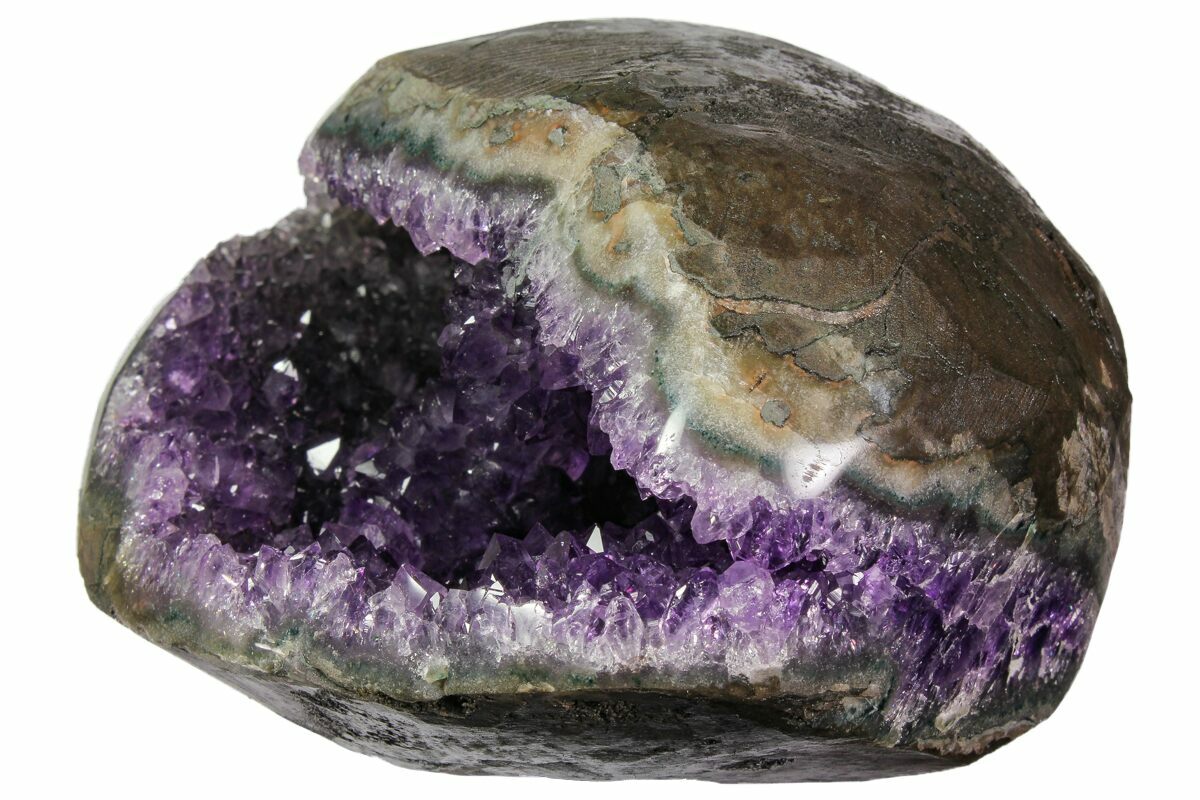

Some crystals are still colored violet in central parts while the outmost layers of the rhombohedral faces start to develop a yellow-brown color. Bottom Left: Heating to about 380☌ for 8 hours resulted in loss of most violet color and an overall patchy appearence.The complete bleaching would probably have required another 2-3 months of exposure.

Fading proceeds relatively quickly in the beginning, but slows down with time.

The crystals have lost almost all their color, but some slightly violet patches are still visible inside some crystals.
Top Right: Exposed to UV light from two 18W low pressure mercury lamps (germicidal UV-C lamps) for 3 months. Color seems to be evenly distributed in the tips, but is most intense 1-4 mm under the rhombohedral crystal faces. The four pieces were glued together again after treatment. Three of them were treated with heat or UV radiation. The strength of the effect varies to a considerable degree, and changes in the hue depending on the direction of the transmitted light may be observable with the naked eye, in particular in crystals with a zonar development of color, which may even show sky-blue tones.Ī part of a deeply colored amethyst geode from Rio Grande Do Sul was cut into four pieces. The photo to the right shows the effects of heat (bottom left and right) and UV irradiation (top right) on the color of a specimen from Uruguay.Ĭhanges in color of amethyst by heat treatment and UV radiation.Īmethyst is pleochroic when the polarization of the light is changed from parallel to the c-axis to perpendicular to the c-axis, amethyst changes its color from blue-violet to purple. Irradiation with UV light will also destroy the color centers, and accordingly prolonged exposure to sunlight will slowly fade amethyst. When heated to more than about 300-400☌, amethyst loses its violet color and often turns yellow, orange or brown, and then resembles the quartz variety citrine, but depending on the locality and the temperature during the heat treatment it may also turn colorless or - rarely - green. In prismatic crystals the color may appear in phantom-like thin layers, while in scepters and skeleton quartz the color is often concentrated along the edges, and accompanied by smoky zones. Occasionally the color is deeper under either the r or z rhombohedral faces, giving the crystal a pinwheel appearence when viewed from the top. In amethyst geodes it is often most intense in the growth zones under the rhombohedral faces. The color in amethyst from most localities is unevenly distributed in the individual crystals.







 0 kommentar(er)
0 kommentar(er)
